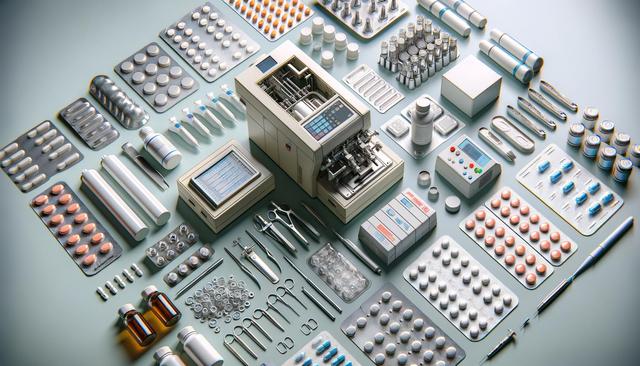The Vital Role of Pharmaceutical Packaging Workers in Healthcare
Pharmaceutical packaging workers play an essential part in maintaining the safety, quality, and accessibility of medical products.

Understanding the Responsibilities of Pharmaceutical Packaging Workers
Pharmaceutical packaging workers are central to the final stages of drug manufacturing. Their primary responsibility is to ensure that medications are packaged accurately, safely, and in compliance with strict industry regulations. This includes handling tablets, capsules, liquids, and injectables, each requiring different packaging techniques and equipment. Workers must follow detailed instructions, adhere to hygiene protocols, and operate within cleanroom environments to prevent contamination.
Their duties often include:
- Operating packaging machinery and equipment
- Labeling and sealing products with precision
- Inspecting containers for defects or inconsistencies
- Maintaining records for traceability and compliance
These tasks demand not only technical skills but also attention to detail, as any mistake in labeling or packaging could compromise patient safety. By ensuring that products are correctly labeled with dosage, expiry dates, and batch numbers, workers contribute directly to patient well-being and regulatory compliance.
Work Environment and Safety Protocols
The work environment for pharmaceutical packaging workers is highly controlled to meet health and safety standards. Cleanrooms are designed to minimize the risk of contamination, with strict procedures in place for gowning, hand hygiene, and equipment sterilization. Workers must wear protective clothing and follow protocols rigorously to ensure product integrity.
Health and safety are paramount in this field, and workers undergo regular training to stay updated on:
- Good Manufacturing Practices (GMP)
- Standard Operating Procedures (SOPs)
- Equipment handling and emergency protocols
- Hazardous material management
By adhering to these practices, pharmaceutical packaging workers help maintain the high standards required in the pharmaceutical industry. Their commitment to safety not only protects consumers but also ensures the long-term credibility of the manufacturing organization.
Required Skills and Qualifications
Pharmaceutical packaging positions typically require a high school diploma or equivalent, though some roles may demand additional technical training. More important, however, are the soft and technical skills that enable workers to perform efficiently and safely. Critical thinking, good communication, and a strong sense of responsibility are key attributes in this role.
Essential skills for pharmaceutical packaging workers include:
- Familiarity with automated packaging systems
- Basic understanding of pharmaceutical terminology
- Ability to follow written and verbal instructions precisely
- Strong organizational and documentation abilities
Those with experience in manufacturing or quality control environments may find it easier to transition into packaging roles. Furthermore, employers often provide on-the-job training to help new hires become familiar with specific processes and regulations.
Challenges Faced in the Packaging Process
Despite the structured nature of pharmaceutical packaging, workers often face several challenges. These can include high production targets, repetitive tasks, and the need to maintain accuracy under time pressure. Additionally, working in sterile environments can be physically demanding, requiring individuals to spend long hours in protective gear.
Some common challenges include:
- Adapting to frequent changes in product lines or packaging materials
- Ensuring quality under tight deadlines
- Managing complex labeling requirements for different regulatory markets
- Maintaining focus during repetitive tasks to avoid errors
Overcoming these challenges requires a combination of resilience, teamwork, and continuous improvement. Many organizations invest in employee development programs to help workers build skills and stay motivated on the job.
Career Outlook and Opportunities for Growth
Pharmaceutical packaging roles offer stable employment opportunities, especially as global demand for medications continues to rise. With experience, packaging workers can move into supervisory or quality assurance positions, or specialize in machinery maintenance and calibration. The sector also values cross-training, allowing individuals to explore related areas such as logistics, supply chain, or regulatory compliance.
Careers in pharmaceutical packaging can serve as a stepping stone for further advancement, including roles like:
- Packaging line supervisor
- Quality control inspector
- Process technician
- Manufacturing coordinator
As automation becomes more prevalent, workers with technical aptitude and a willingness to learn new systems will be well-positioned to succeed. The field continues to evolve, and those who stay adaptable and committed to quality will find rewarding career paths within the industry.
Conclusion: The Backbone of Pharmaceutical Delivery
Pharmaceutical packaging workers are an integral, though often unsung, component of the healthcare supply chain. Their work ensures that life-saving medications reach patients safely and in optimal condition. For those seeking a meaningful career with opportunities for growth, the pharmaceutical packaging field offers a stable and impactful path. By maintaining high standards and adapting to industry advancements, these professionals help uphold the trust placed in modern medicine.